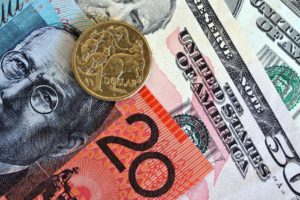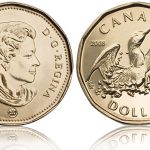 Australian dollar lost ground against its US counterpart in subdued trade on Tuesday, as yesterdays data points from the United States supported the view that economy was improving.
Australian dollar lost ground against its US counterpart in subdued trade on Tuesday, as yesterdays data points from the United States supported the view that economy was improving.
AUD/USD hit a session low at 0.8906 at 3:25 GMT, after which consolidation followed at 0.8916, down 0.20% for the day. Support was likely to be received at December 20th low, 0.8856, while resistance was to be met at December 23rd high, 0.8958.
A report showed on Monday that consumers in the United States increased their expenditures in November, which suggested good sales figures during the holiday shopping season, while this served as another evidence that US economy was gaining traction. Personal spending, which reflects expenditures on all sorts of goods and services, rose 0.5% in November compared to October, meeting preliminary estimates and marking the strongest rate of increase since June.
However, personal income of consumers rose 0.2% in November compared to a month ago, after dipping 0.1% in October. Experts had anticipated a 0.4% gain in November. This weaker-than-projected rate of increase in personal income may lead to a slowdown in personal spending in the coming months.
Consumer spending is a key factor for ecomonic development, as it contributes to about two-thirds of nations Gross Domestic Product. The above mentioned data points implied that consumers in the United States might have become more confident during the final quarter of the year than they have been during Q3 and Q2. Possible factors for this higher confidence might have been the waning effects of higher taxes, imposed in the beginning of the year, as well as recent improvement in nations labor market.
At the same time, a report by Thomson Reuters in cooperation with the University of Michigan revealed that the index, gauging consumer confidence in the United States advanced to reach its highest level since July in December. The final value of the index of consumer sentiment came in at 82.5 in December and confirmed the preliminary reading. The index stood at 75.1 last month, according to final data released in late November. Analysts had expected that the index will demonstrate a stronger advance, to 82.7 in December.
This result suggested that consumer expectations seem to have recovered, especially after the experienced partial government shutdown in October due to the budget impasse. In addition, declining prices of gasoline, the strong increase in nations employment and rising domestic share values have also managed to boost confidence among consumers.
Meanwhile, swaps data compiled by Bloomberg showed that there was a 30% probability that the Reserve Bank of Australia (RBA) may reduce its benchmark interest rate from the current record-low level of 2.50% to 2.25% or less during the first half of next year.
RBA Governor Glenn Stevens said earlier in December that he would prefer the national currency to depreciate to 85 U.S. cents, in an interview with the Australian Financial Review. The governor has repeatedly stressed on the outlook for Aussie declines during the past two months. On December 18th Stevens said in Parliament that he was also open to further rate cuts, in case such a measure was needed.
The yield on Australian 10-year government bonds rose to 4.44% this month, reaching highs unseen in two years. Earlier on Tuesday yields were 4.24%.
Elsewhere, the Australian dollar was little changed against the euro, with EUR/AUD cross dipping a mere 0.01% on a daily basis to trade at 1.5332 at 9:41 GMT. AUD/NZD pair was gaining 0.09% today to trade at 1.0910 at 9:41 GMT.





